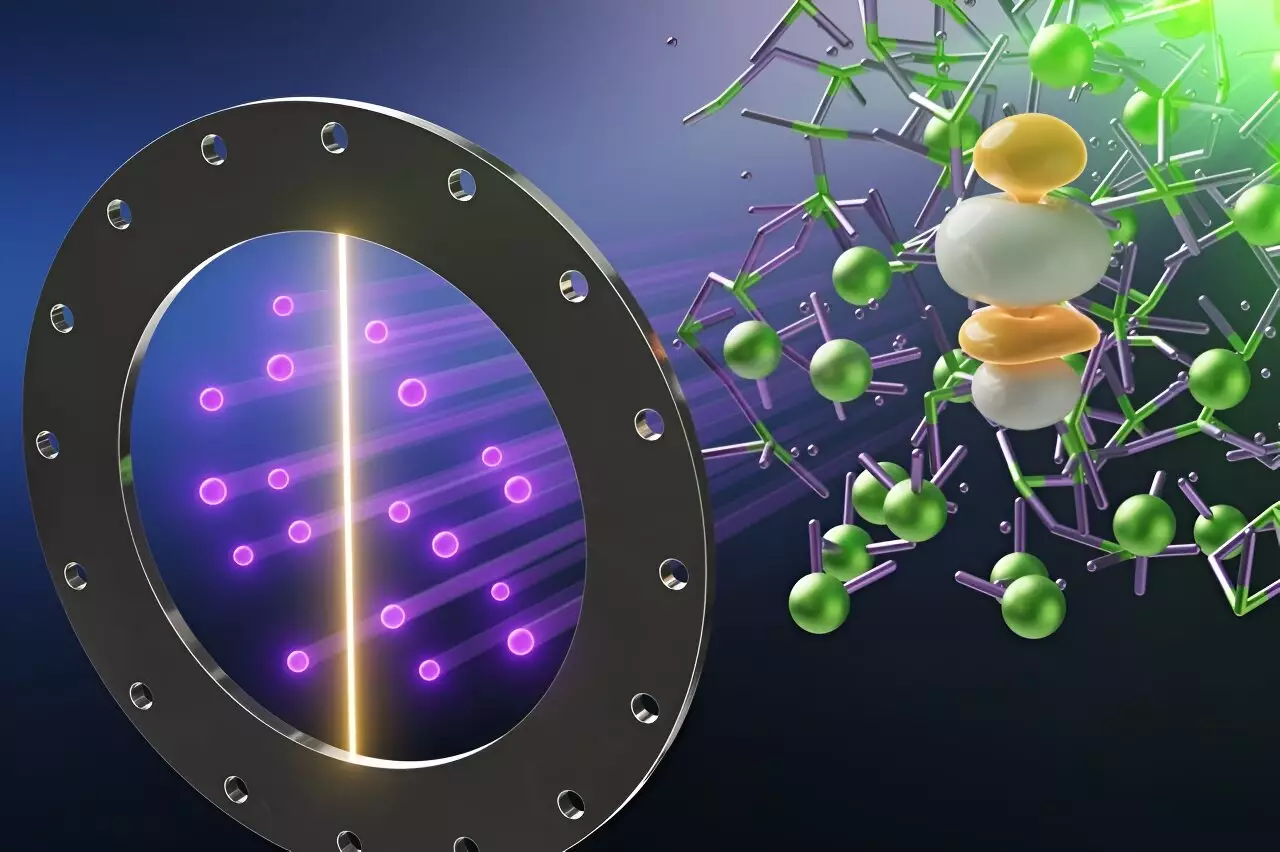In recent years, the quest for sustainable and efficient energy sources has intensified, with nuclear energy emerging as a prime candidate due to its potential for low-emission power generation. A groundbreaking study published in the Journal of the American Chemical Society sheds light on a significant component of this energy source: liquid uranium trichloride (UCl3). Recognizing the unique chemical dynamics and atomic structure of this high-temperature liquid salt marks a pivotal advancement—one that could revolutionize the design of next-generation nuclear reactors.
Researchers contend that understanding the behavior of UCl3 in its molten state is essential not only for the development of predictive models for future reactors but also for enhancing the safety and efficiency of nuclear power systems. The work, spearheaded by scientists from Oak Ridge National Laboratory (ORNL), Argonne National Laboratory, and the University of South Carolina, emphasizes that reliable data can empower engineers and researchers to create models that foresee microscopic behaviors of nuclear materials under operational conditions.
The conception of molten salt reactors is not novel; in fact, ORNL conducted successful prototyping experiments back in the 1960s that illuminated their potential. However, as the world grapples with climate change, the urgency to transition to safer and greener energy sources has revitalized interest in this technology. Unlike traditional reactors that rely on solid uranium dioxide pellets, molten salt reactors utilize liquid fuel salts that can potentially operate at higher temperatures and with improved safety measures.
The behavior of these liquid salts, particularly those containing actinides like uranium, is complex and not completely understood. Such materials require significantly elevated temperatures to transition into a liquid state, which introduces additional challenges for predicting their chemical behavior. The ORNL team’s research represents a formidable effort to fill some of these knowledge gaps, ultimately informing the next phase of reactor design.
To unravel the intricate details of UCl3, the researchers employed a blend of computational modeling and state-of-the-art neutron scattering techniques at the Spallation Neutron Source (SNS) at ORNL. This facility stands as one of the world’s most advanced sources for neutron research, allowing for unparalleled insights into the atomic dynamics of materials. Through a meticulous examination of chemical bonding in molten UCl3, the team discovered unexpected behavior during its phase transition.
One of the standout findings is the counterintuitive observation that, as UCl3 transitions to a liquid state, the bond lengths between uranium and chlorine atoms actually decrease. This contradicts the conventional understanding that particles tend to expand with heating. Moreover, the bonding dynamics revealed oscillations in bond lengths, which transiently stretched and contracted in a manner that suggests a more covalent character at certain moments, albeit briefly. These unexpected nuances add complexity to our understanding of bond behavior within actinides and may clarify discrepancies in historical data.
The implications of this study extend well beyond the confines of academic curiosity. By elucidating the atomic behavior of molten UCl3, the research lays the groundwork for significant advancements in the design and operation of future nuclear reactors. Understanding the unique behaviors of actinide salts can inform strategies for addressing some of the long-standing challenges associated with nuclear waste management and pyroprocessing.
Furthermore, the ability to accurately model the behaviors of such materials can enhance safety protocols and lead to innovations in reactor design that make use of these liquid salts more feasible. The transient covalent behavior observed might also suggest new avenues for optimizing reactor chemistry, potentially enabling more robust reactions and decreasing the likelihood of hazardous incidents.
As the globe collectively seeks sustainable solutions to its energy needs, the insights gained from studying the liquid state of uranium trichloride represent a vital step in advancing nuclear science. The research breaks ground in a previously uncharted domain of chemistry, revealing intricacies of atomic behavior under extreme conditions that were previously misunderstood. This body of work not only refines predictive models critical for next-generation nuclear reactors but also rounds out our conceptual framework for handling radioactive elements more safely and effectively. As energy demands continue to escalate, the findings from this exploration into UCl3 will undoubtedly shape the future landscape of clean, nuclear energy.

